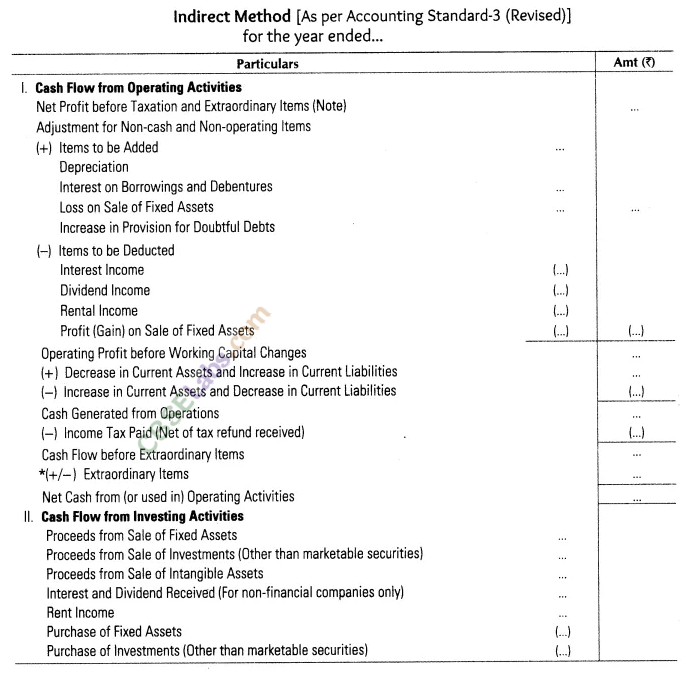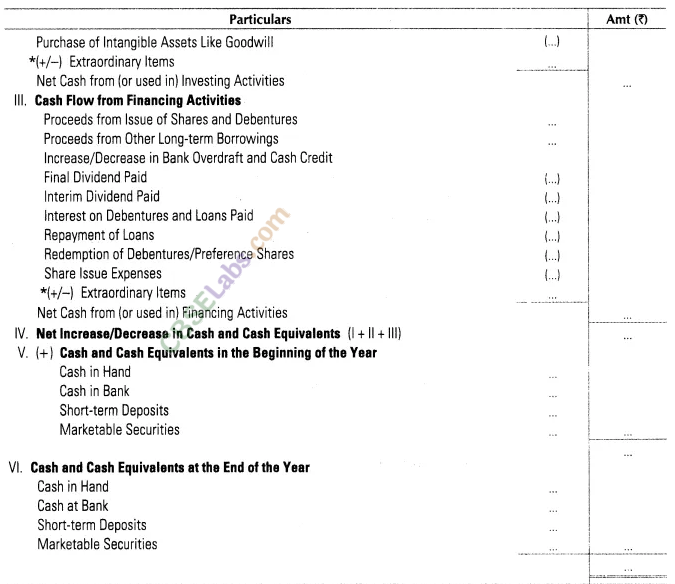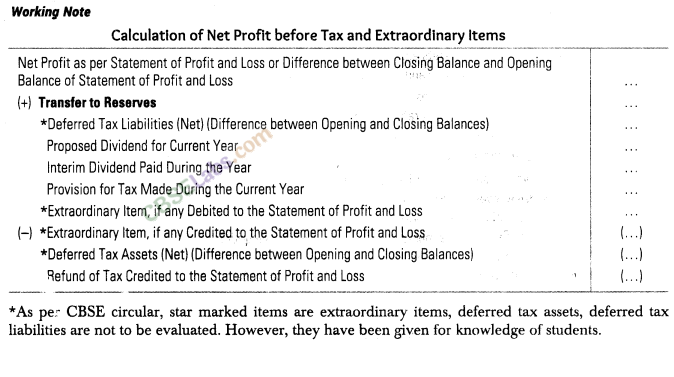Cash Flow Statement – CBSE Notes for Class 12 Accountancy
CBSE Notes CBSE Notes Accountancy NCERT Solutions Accountancy
1. Cash Flow Statement
Cash flow statement is a statement showing the changes in financial position of a business concern during different intervals of time in terms of cash and cash equivalents.
The Revised Accounting Standard-3 has made it mandatory for all listed companies to prepare and present a cash flow statement along with other financial statements on annual basis.
2. Cash Flows
Cash flows are inflows and outflows of cash and cash equivalent. It implies movement in and movement out of cash and cash equivalents. Receipt of cash from a non-cash item is termed as ‘cash inflow’, while cash payment in respect of such item is termed as ‘cash outflow’.
Cash
Cash comprises of cash in hand and demand deposits with the bank.
Cash Equivalents Cash equivalents are ‘short-term highly liquid investments that are j readily convertible into known amount of cash and which are subjected to an insignificant risk of change in value’.
3. Objectives of Cash Flow Statement
(i) Useful in short-term financial planning.
(ii) Useful inefficient cash management.
(iii) Helpful in formulation of business policies.
(iv) Assists in preparation of cash budget.
(v) Used for assessment of cash flow from various activities, viz operating, investing and financing activities.
4. Limitations of Cash Flow Statement
(i) Based on historical cost principle.
(ii) Based on secondary data.
(iii) Ignores non-cash transactions.
(iv) No adherence of basic accounting principles.
(v) Cash flow statement is not a substitute for income statement.
5. Classification of Business Activities Accounting Standard-3
(Revised) requires that the changes resulting in inflows and outflows of cash and cash equivalents will be classified into following three activities:
(i) Cash flow from operating activities.
(ii) Cash flow from investing activities.
(iii) Cash flow from financing activities.
6. Cash Flow from Operating Activities
Operating activities are the principal revenue producing activities of the enterprise and other activities that are not investing or financing activities.
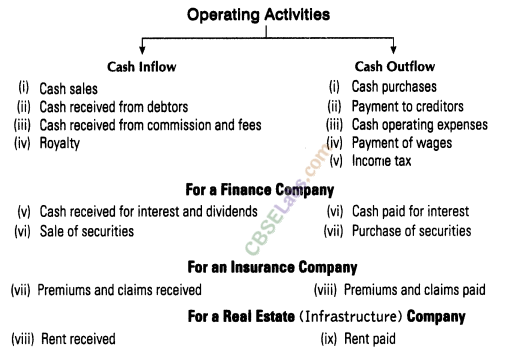
7. Cash Flow from Investing Activities
As per AS-3, investing activities are the acquisition and disposal of the long-term assets and other investments, not included in cash equivalents.
Cash flow from investing activities are exhibited as follows:
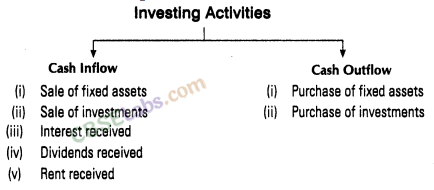
8. Cash Flow from Financing Activities
Financing activities are the activities which result in change in the size and composition of the owner’s capital (including preference share capital) and borrowings (including debentures) of the enterprise from other sources.
Cash flow arising from financing activities are exhibited as follows:
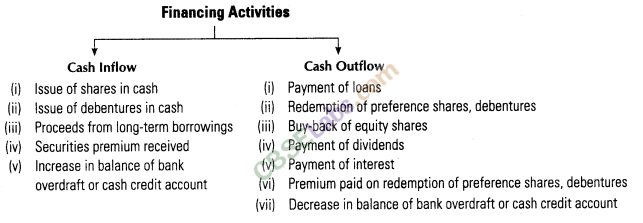
9. Format of Cash Flow Statement
